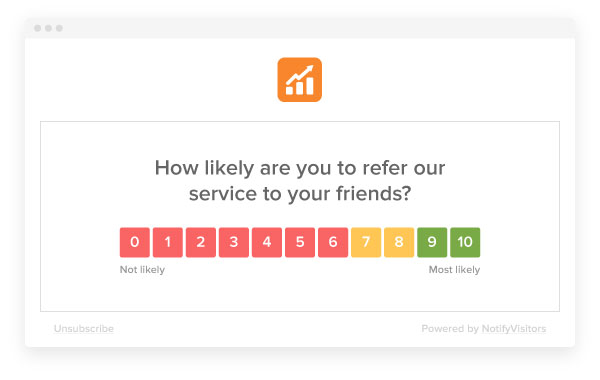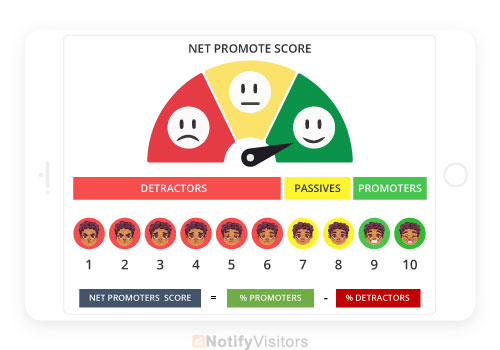Whenever a person has to make an important decision, that person consults with their family members and friends. People also search or do surveys for the feedback of other people if they are making decisions on buying a house or car, searching for a job, booking hotels, etc. If you are running a company then it is important to know the experience of customers with your company or brand. In today’s time, companies are concentrating more on customer feedback than products.
To know the customer’s experience and their feedback, companies need to communicate with them. For this, the best method is to do surveys and ask the customers about their experience, their needs, and the problems they faced during their market journey. To calculate or evaluate that Net Promoter Score comes as a solution. Net Promoter Score (NPS) measures the customer’s loyalty towards the brand or company. These NPS Statistics show the customer’s loyalty and give an insightful view of how the customer will like the brand for a recommendation.
Contents
What is the Net Promoter Score?

The Net Promoter Score is a method to calculate customer’s experience based on surveys. Technically Net Promoter Score is a metric to compute customer loyalty. In 2003, Fred Reichheld introduced it. To understand it simply it is
Net – the difference between views whether good or bad.
Promoter – to give a view about something whether good or bad
Score – the value of something in numbers.
By combining these three words, you will know the NPS (Net Promoter Score) of your company or brand with customers’ views. NPS will show you whether the customer promotes or refers to your brand to others or not. It shows the customer’s loyalty to how likely they would refer to your brand to get you a new customer. It measures customer loyalty by identifying them as detractors, passives, and promoters of your brand. Calculating Net Promoter Score is easy, you calculate your customer NPS easily with a simple survey with a simple question: –
How likely are you to recommend our products or services to people? rate on a scale from 0-10.
Now you have to divide the responses of customers into three segments:-

- Promoters: – who responded from 9-10 are promoters and loyal customers.
- Passives: – who responded 7-8 are passive as they like your brand or company but are not that satisfied to recommend or refer it to others.
- Detractors: – who responded between 0-6 are detractors as they were not satisfied with the brand or company.
To know the NPS you simply need to subtract the promoters’ percentage from the detractors’ percentage. NPS survey tools are a are useful and this is good method for companies to measure their performance.
With time, companies have understood the value of customer experience and started focusing on customer feedback. By doing research with companies on Net Promoter Score or as shown in this NPS Statistics they know the importance of NPS.
Click for an elaborative guide to Net Promoter Score Calculation
Best NPS statistics and trends you should know
Here are some interesting about NPS statistics:
General NPS Statistics:
- The average NPS across all industries is +44. ( SurveyMonkey)
- The top 25% of companies have an NPS of +72 or higher. (SurveyMonkey)
- The bottom 25% of companies have an NPS of 0 or lower. (SurveyMonkey)
- 72% of customers who base their purchasing decisions on recommendations are more likely to buy from a company with a high NPS. (Temkin Group)
- A 1-point increase in NPS can lead to a 2% increase in revenue. ( Frederick Reichheld)
Industry-Specific NPS Benchmarks:
- The insurance industry has the highest average NPS at +74. (Retently)
- The financial services industry has the second highest average NPS at +71. (Retently)
- The technology & services industry has an average NPS of +64. ( Retently)
- The retail industry has an average NPS of +61. (Retently)
- The ecommerce industry has an average NPS of +50. (Retently)
NPS Statistics by Score:
- Promoters (those who score 9 or 10) make up 60% of customers on average. (Delighted)
- Passives (those who score 7 or 8) make up 20% of customers on average. (Delighted)
- Detractors (those who score 0 to 6) make up 20% of customers on average. (Delighted)
- Detractors are six times more likely to churn than promoters. (CustomerGauge)
- Promoters are five times more likely to repurchase than detractors. ( CustomerGauge)
NPS Trends:
- NPS scores have been trending upwards over the past few years. (Satmetrix)
- Companies that focus on improving their NPS see higher customer retention and revenue growth. ( Net Promoter System)
- B2B companies tend to have higher NPS scores than B2C companies. ( Temkin Group)
- Mobile apps tend to have lower NPS scores than websites. (App Annie)
- NPS scores can be used to predict future customer behavior. (Frederick Reichheld)
Additional NPS Statistics:
- The NPS question is the most widely used customer loyalty metric in the world. (Net Promoter System)
- NPS was developed by Fred Reichheld in 1993. ( Bain & Company)
- NPS is a registered trademark of Bain & Company, Fred Reichheld, and Satmetrix Systems, Inc. (Net Promoter System)
- There are many different ways to calculate NPS. ( Delighted)
- The best way to calculate NPS is to use the traditional method of subtracting the percentage of detractors from the percentage of promoters. (Net Promoter System)
Bonus NPS Statistics:
- 80% of executives believe that NPS is a good measure of customer loyalty. ( Satmetrix)
- 70% of companies use NPS to track customer satisfaction. (Delighted)
- 50% of companies use NPS to improve their customer experience. (Delighted)
- 40% of companies use NPS to drive employee engagement. ( Delighted)
- 30% of companies use NPS to measure the effectiveness of their marketing campaigns. (Delighted)
Also Read:

























 Email
Email SMS
SMS Whatsapp
Whatsapp Web Push
Web Push App Push
App Push Popups
Popups Channel A/B Testing
Channel A/B Testing  Control groups Analysis
Control groups Analysis Frequency Capping
Frequency Capping Funnel Analysis
Funnel Analysis Cohort Analysis
Cohort Analysis RFM Analysis
RFM Analysis Signup Forms
Signup Forms Surveys
Surveys NPS
NPS Landing pages personalization
Landing pages personalization  Website A/B Testing
Website A/B Testing  PWA/TWA
PWA/TWA Heatmaps
Heatmaps Session Recording
Session Recording Wix
Wix Shopify
Shopify Magento
Magento Woocommerce
Woocommerce eCommerce D2C
eCommerce D2C  Mutual Funds
Mutual Funds Insurance
Insurance Lending
Lending  Recipes
Recipes  Product Updates
Product Updates App Marketplace
App Marketplace Academy
Academy

